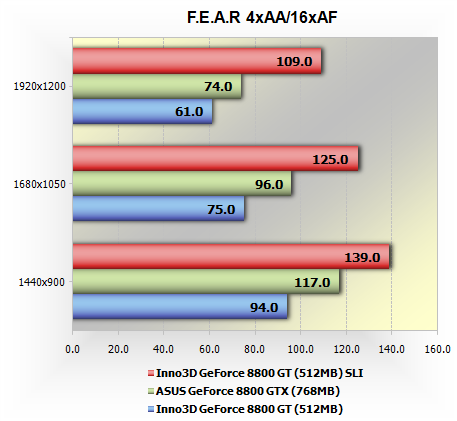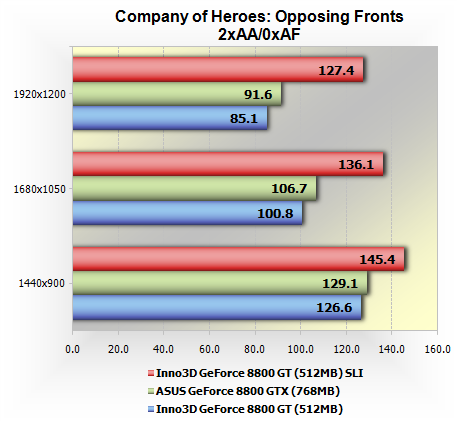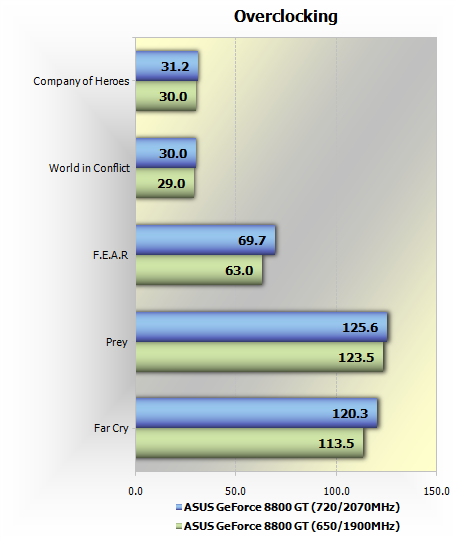SLI Performance & Overclocking
Given the very attractive price point of the GeForce 8800 GT we thought we should run some preliminary SLI tests to see what potential could be untapped by running two cards for a combined price that would be less of that of a 8800GTX just a few months ago.


As we have found time and time again, the performance gains offered by SLI are far from consistent as one game can show up to a 80% performance increase while others see 10% or even less.
These few tests paint a very appealing picture if you just want to maximize performance on a budget requirement nothing compared to dual GTX boards a few months ago. However, the decision to go SLI is one that has to be taken with careful consideration as other factors like case temperature and power supply requirements come into play. Our friends at Legion Hardware recently conducted a more through investigation in a wider number of titles testing dual GeForce 8800 GT boards running in SLI.
In general we still believe SLI (or Crossfire for that matter) is a technology better suited for extreme high-end gaming systems, or as an alternative upgrade path when a gaming performance boost is desired without having to upgrade platforms (new motherboard, CPU, and memory).

Overclocking the Inno3D 8800 GT went quite well as the core reached 720MHz (+70MHz) while the memory was happy at 2070MHz (+170MHz). Although this is not a huge result it is nonetheless impressive given how aggressively clocked this graphics card already was.
Real-time strategy games (Company of Heroes and World in Conflict) which also rely heavily on the CPU, did not see much of a performance gain when overclocking. However, first person shooter titles such as F.E.A.R, Far Cry and Prey, all saw reasonable performance gains when overclocking the graphics card. In fact, F.E.A.R saw significant improvements, as the average frame rate at 1920x1200 went from 63fps to 69fps once overclocked.